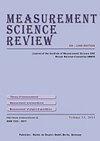Integrated Sensing and Computing for Wearable Human Activity Recognition with MEMS IMU and BLE Network
IF 0.8
4区 工程技术
Q4 INSTRUMENTS & INSTRUMENTATION
引用次数: 5
Abstract
Abstract The miniature sensor devices and power-efficient Body Area Networks (BANs) for Human Activity Recognition (HAR) have gained increasing interest in different fields, including Daily Life Assistants (DLAs), medical treatment, sports analysis, etc. The HAR systems normally collect data with wearable sensors and implement the computational tasks with a host machine, where real-time transmission and processing of sensor data raise a challenge for both the network and the host machine. This investigation focuses on the hardware/software co-design for optimized sensing and computing of wearable HAR sensor networks. The contributions include (1) design of a miniature wearable sensor node integrating a Micro-Electro-Mechanical System Inertial Measurement Unit (MEMS IMU) with a Bluetooth Low Energy (BLE) in-built Micro-Control Unit (MCU) for unobtrusive wearable sensing; (2) task-centric optimization of the computation by shifting data pre-processing and feature extraction to sensor nodes for in-situ computing, which reduces data transmission and relieves the load of the host machine; (3) optimization and evaluation of classification algorithms Particle Swarm Optimization-based Support Vector Machine (PSO-SVM) and Cross Validation-based K-Nearest Neighbors (CV-KNN) for HAR with the presented techniques. Finally, experimental studies were conducted with two sensor nodes worn on the wrist and elbow to verify the effectiveness of the recognition of 10 virtual handwriting activities, where 10 recruited participants each repeated an activity 5 times. The results demonstrate that the proposed system can implement HAR tasks effectively with an accuracy of 99.20 %.基于MEMS IMU和BLE网络的可穿戴人体活动识别集成传感与计算
摘要用于人类活动识别(HAR)的微型传感器设备和功率高效的身体区域网络(BAN)在不同领域引起了越来越多的兴趣,包括日常生活助理(DLA)、医疗、运动分析等。HAR系统通常使用可穿戴传感器收集数据,并使用主机执行计算任务,其中传感器数据的实时传输和处理对网络和主机都提出了挑战。本研究的重点是可穿戴HAR传感器网络的硬件/软件协同设计,以优化传感和计算。其贡献包括(1)设计了一种微型可穿戴传感器节点,该节点集成了微机电系统惯性测量单元(MEMS IMU)和蓝牙低能耗(BLE)内置微控制单元(MCU),用于不引人注目的可穿戴传感;(2) 以任务为中心的优化计算,将数据预处理和特征提取转移到传感器节点进行原位计算,减少了数据传输,减轻了主机的负载;(3) 基于粒子群优化的支持向量机(PSO-SVM)和基于交叉验证的K-最近邻(CV-KNN)的HAR分类算法的优化和评估。最后,对佩戴在手腕和肘部的两个传感器节点进行了实验研究,以验证识别10个虚拟手写活动的有效性,其中10名招募的参与者每人重复一个活动5次。结果表明,该系统能够有效地实现HAR任务,准确率达到99.20%。
本文章由计算机程序翻译,如有差异,请以英文原文为准。
求助全文
约1分钟内获得全文
求助全文
来源期刊

Measurement Science Review
INSTRUMENTS & INSTRUMENTATION-
CiteScore
2.00
自引率
11.10%
发文量
37
审稿时长
4.8 months
期刊介绍:
- theory of measurement - mathematical processing of measured data - measurement uncertainty minimisation - statistical methods in data evaluation and modelling - measurement as an interdisciplinary activity - measurement science in education - medical imaging methods, image processing - biosignal measurement, processing and analysis - model based biomeasurements - neural networks in biomeasurement - telemeasurement in biomedicine - measurement in nanomedicine - measurement of basic physical quantities - magnetic and electric fields measurements - measurement of geometrical and mechanical quantities - optical measuring methods - electromagnetic compatibility - measurement in material science
 求助内容:
求助内容: 应助结果提醒方式:
应助结果提醒方式:


